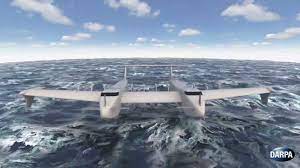
Breaking News
 Is Yen Carry Trade's unwind about to trigger a repo market meltdown? Let's dive into the mec
Is Yen Carry Trade's unwind about to trigger a repo market meltdown? Let's dive into the mec
 Chairman Rand Paul Releases New Report Revealing Hundreds of Billions...
Chairman Rand Paul Releases New Report Revealing Hundreds of Billions...
 Get Schiffty Music Video | Rick and Morty | Adult Swim
Get Schiffty Music Video | Rick and Morty | Adult Swim
Top Tech News
 This tiny dev board is packed with features for ambitious makers
This tiny dev board is packed with features for ambitious makers
 Scientists Discover Gel to Regrow Tooth Enamel
Scientists Discover Gel to Regrow Tooth Enamel
 Vitamin C and Dandelion Root Killing Cancer Cells -- as Former CDC Director Calls for COVID-19...
Vitamin C and Dandelion Root Killing Cancer Cells -- as Former CDC Director Calls for COVID-19...
 Galactic Brain: US firm plans space-based data centers, power grid to challenge China
Galactic Brain: US firm plans space-based data centers, power grid to challenge China
 A microbial cleanup for glyphosate just earned a patent. Here's why that matters
A microbial cleanup for glyphosate just earned a patent. Here's why that matters
 Japan Breaks Internet Speed Record with 5 Million Times Faster Data Transfer
Japan Breaks Internet Speed Record with 5 Million Times Faster Data Transfer
 Advanced Propulsion Resources Part 1 of 2
Advanced Propulsion Resources Part 1 of 2
 PulsarFusion a forward-thinking UK aerospace company, is pushing the boundaries of space travel...
PulsarFusion a forward-thinking UK aerospace company, is pushing the boundaries of space travel...
 Dinky little laser box throws big-screen entertainment from inches away
Dinky little laser box throws big-screen entertainment from inches away
 'World's first' sodium-ion flashlight shines bright even at -40 ºF
'World's first' sodium-ion flashlight shines bright even at -40 ºF
DARPA Liberty Lifter aims to bring back heavy-lift ground effect seaplanes

Prototypes could fly as early as 2027.
The wing-in-ground effect has seen a bit of a mini revival over the last few years. There are a few players trying to get ground effect vehicles (GEVs) into commercial circulation – notably Singapore's Wigetworks, with its Airfish-8 and Boston's Regent, which has drawn in considerable funding and pre-sales to build a prototype of its fully electric, 12-passenger Viceroy seagliders.
All of these aircraft, as well as the Liberty Lifter and Russia's famous WW2 Ekranoplan program, aim to make use of a neat bit of physics: when a plane flies very close to the ground – at an altitude less than half of its own wingspan – it can ride on a cushion of high-pressure air between the wing and the surface, gaining additional lift while reducing lift-induced drag. This can make these things extremely efficient – flying at an altitude around 5 percent of the wingspan can get you from A to B up to 2.3 times more efficiently.
DARPA likes the idea because ground-effect seaplanes could get big, heavy cargo from A to B much faster than ships, without the need for large ports, or the enormous runways and ground-based logistics required by large cargo planes. A Liberty Lifter could take off from any given body of water, and put down on any other, without any infrastructure requirements, greatly simplifying the logistics of moving big, heavy military gear around the place.
For the Liberty Lifter program, DARPA is looking for designs that are:
Capable of taking off and landing at low speeds on turbulent seas
Capable of carrying payloads over 100 tons
Capable of delivering operational range figures over 7,500 km (4,660 miles)
Capable of operating at sea for weeks at a time without needing land-based maintenance
Capable of reducing the risk of collisions when operating at high speeds in congested areas
Cheap to build, using low-cost materials rather than exotic, lightweight materials
Capable of sensing and avoiding large waves, and intelligently handling the takeoff and landing processes accordingly



